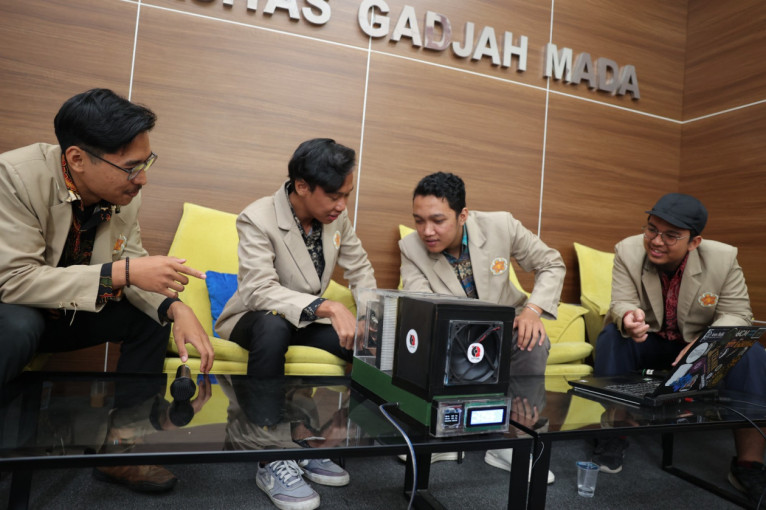
UGM students have developed an integrated carbon absorption technology that can be monitored in real time using smart sensors.
The technology is called CAPTURE (Carbon Abatement, Performance Tracking, and Utilization with Real-Time Evaluation).
It was developed by Javier Ahmad (Physics Engineering), Wahyu T. Wicaksono (Physics Engineering), Daffa I. Izaohar (Physics Engineering), and Glenshah Fauzi (Chemistry) with funding from the Ministry of Education and Culture’s Student Creativity Program in Intellectual Creation in 2023.
“The technology we’ve developed can capture carbon gas from the air through physical adsorption using a membrane made from coconut shell extract,” team leader Javier Ahmad said at UGM on Monday (October 23).
Ahmad expressed that the development of this technology was motivated by the desire to support Indonesia’s efforts to reduce greenhouse gas emissions, both at the regional and global levels.
The vast area of dispersion is the most significant challenge in capturing carbon that has already been released into the atmosphere.
“Carbon capture by adsorption is considered a promising method due to its low energy consumption during regeneration, low investment costs, and lack of pollutants or by-products,” he explained.
Because coconuts are abundant in Indonesia, the shell was chosen as an adsorption membrane. The country’s use of coconuts was not optimal, so this waste was turned into something useful.
“Coconut shells have low ash content, many micropores, and high reactivity. Moreover, from several journals, it is known that coconut shells are already widely used as carbon filters and have shown good results,” Ahmad added.
CAPTURE consists of several components: an air filter, coconut shell adsorbent, exhaust fan, control unit, capacitive sensor, carbon sensor, power supply, and LCD screen.
The portable device has dimensions of 40x26x20 cm, making it suitable for various locations and conditions.
Wahyu Wicaksono added that CAPTURE works by drawing ambient air into the system. The incoming air is then filtered with macro and carbon filters acting as adsorbents.
The air conditions and adsorbent filter quality results can be monitored in real time. Specifically, the air, now carbon-free, is observed in real time.
“The device is planned to be used in green buildings. It works by pulling air from outside the building, capturing the carbon in the air, and then supplying the clean air to the green building,” Wicaksono explained.
The device operates in two modes: ambient mode, which operates manually by toggling an on/off switch, and smart mode, which operates automatically when the CO2 sensor data out equals the CO2 sensor data in, causing the device to turn off.
So, what sets this device apart from existing devices on the market?
Daffa Izaohar explained that their device excels in automatically observing air quality and filter conditions in real time, a feature absent in devices currently on the market.
Most filter systems in the market are primarily for air filtration and are not specifically designed for capturing carbon. As a result, their device can be applied across various sectors, from residential to industrial.
“Because the filter’s saturation is observed in real time, the results of carbon capture can be monitored. When the filter becomes saturated with carbon, the carbon can be harvested for reuse. Moreover, the device displays air conditions before and after filtering in real time,” Izaohar noted.
The prototype of this carbon absorption device was developed with research funding of around IDR 7,500,000.
The device will continue to be developed and mass-produced to help accelerate the Sustainable Development Goals (SDGs), especially in reducing carbon emissions to mitigate climate change’s impact.
Author: Ika
Photographer: Firsto

